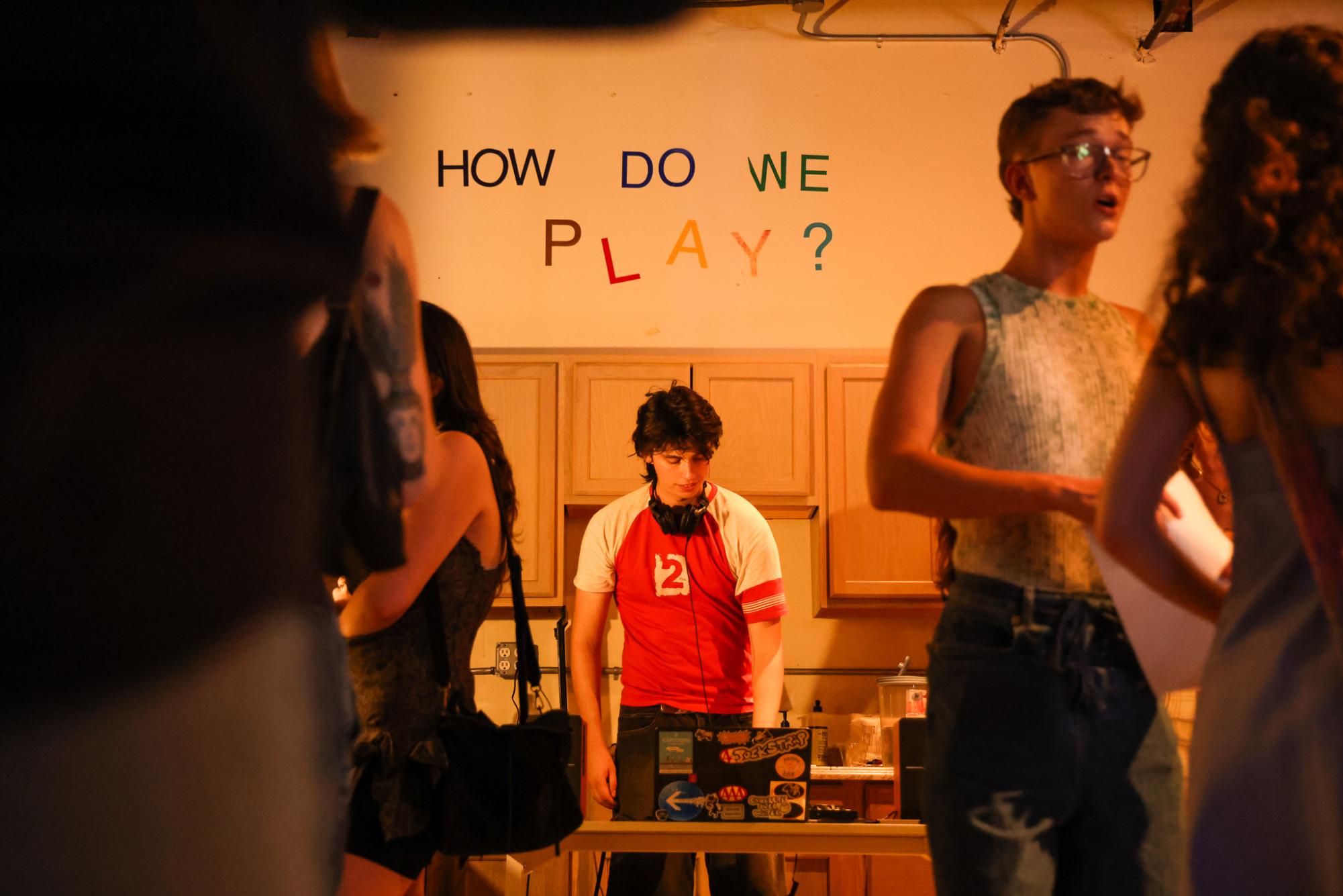
As a child, we’re often told the transition to adult life is exciting — we’re taught to eagerly await the time when we can shed our Barbie dolls and crayons of the past in pursuit of independence. As playdates become dinner parties, our innate sense of wonder and creativity is abandoned as we prioritize work and social responsibilities. But atop a wooden staircase in Williamsburg, getting older doesn’t mean you’ve aged out of hula-hooping or afternoons spent sitting under a big rainbow parachute.
“How Do We Play?” is an exhibition celebrating the power of play, dedicated to addressing the neglect of imagination and creation as we age. The show is deeply personal to Gallatin School of Individualized Study senior Rebecca Lipsitch, who first conceived the idea years before. Lipsitch co-curated the exhibition with Fordham University student Grace Miskovsky.
“I think my favorite [art] shows are the ones that people can interact with and feel like they’re participators and not just museum-goers or viewers,” Lipsitch said. “I love going to openings, but I realize that they tend to feel quite sterile for a lot of people. So, I was like, how can I put on a show where people meet each other and talk to each other?”
Upon ascending a flight of stairs and ducking behind a painted curtain, visitors are met with a room that feels, somehow, familiar. In the midst of art and installations suspended from the walls and ceilings, the form of a kitchen and sitting area takes shape, creating areas of comfort amidst the color and light. Visitors are invited to sit, stand, grab a drink and enjoy the features.
Highlighting the work of 18 artists from both New York and abroad, “How Do We Play?” was created to reconnect with the curiosity and whimsy of our younger selves, invoking them again through artistic expression. Beyond connecting a community over the shared space, Lipsitch and Miskovsky hoped to make people invested in the art itself.
Drawing on the comfort and familiarity of childhood memories, visitors to the exhibition are invited into a living room fit with a worn-in leather couch and a fully functional swing. Marrying the nostalgia of bouncing on a trampoline with more grown-up thrills like a DJ set and bar, the exhibit cultivates a space where the art within it feels approachable.

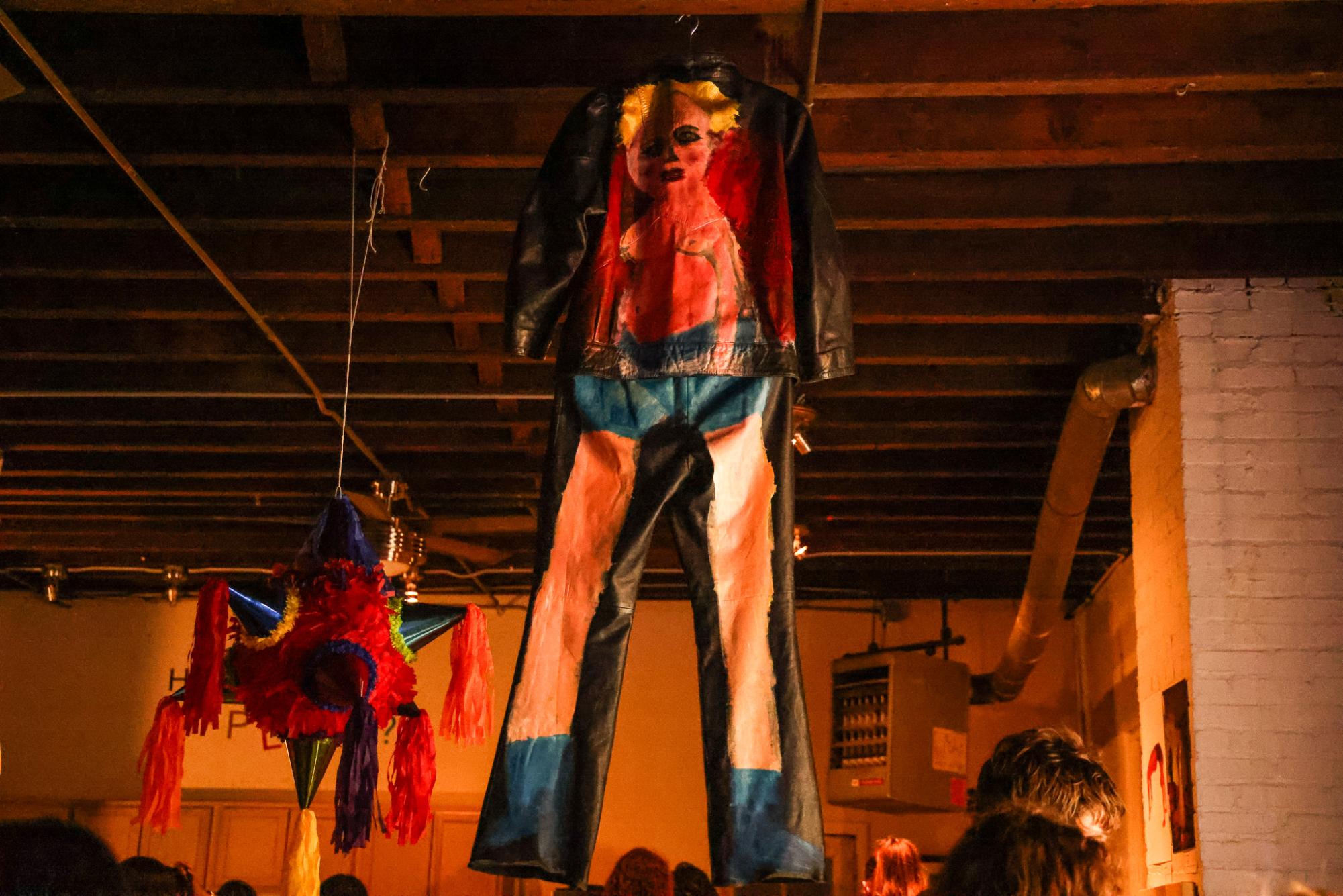
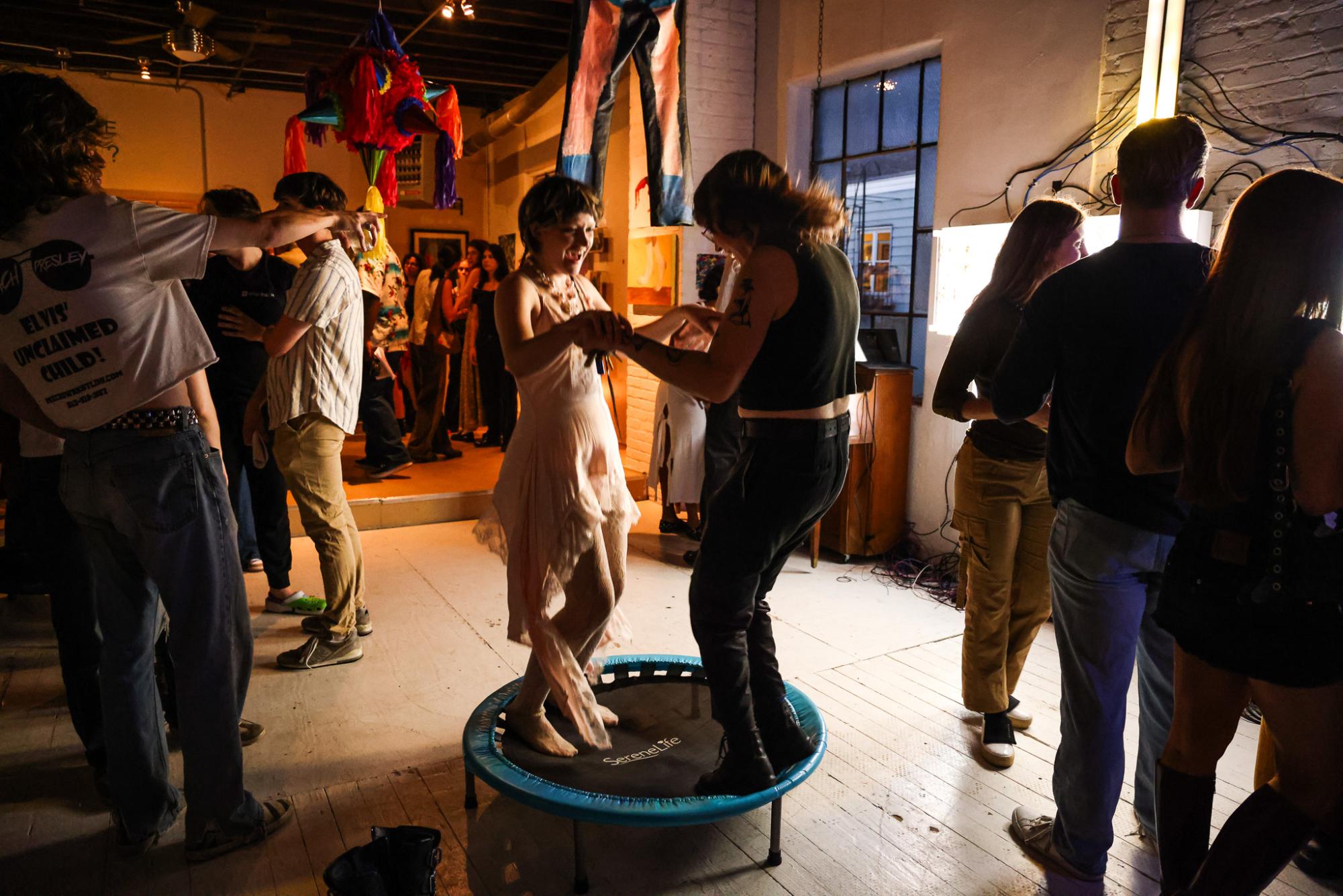
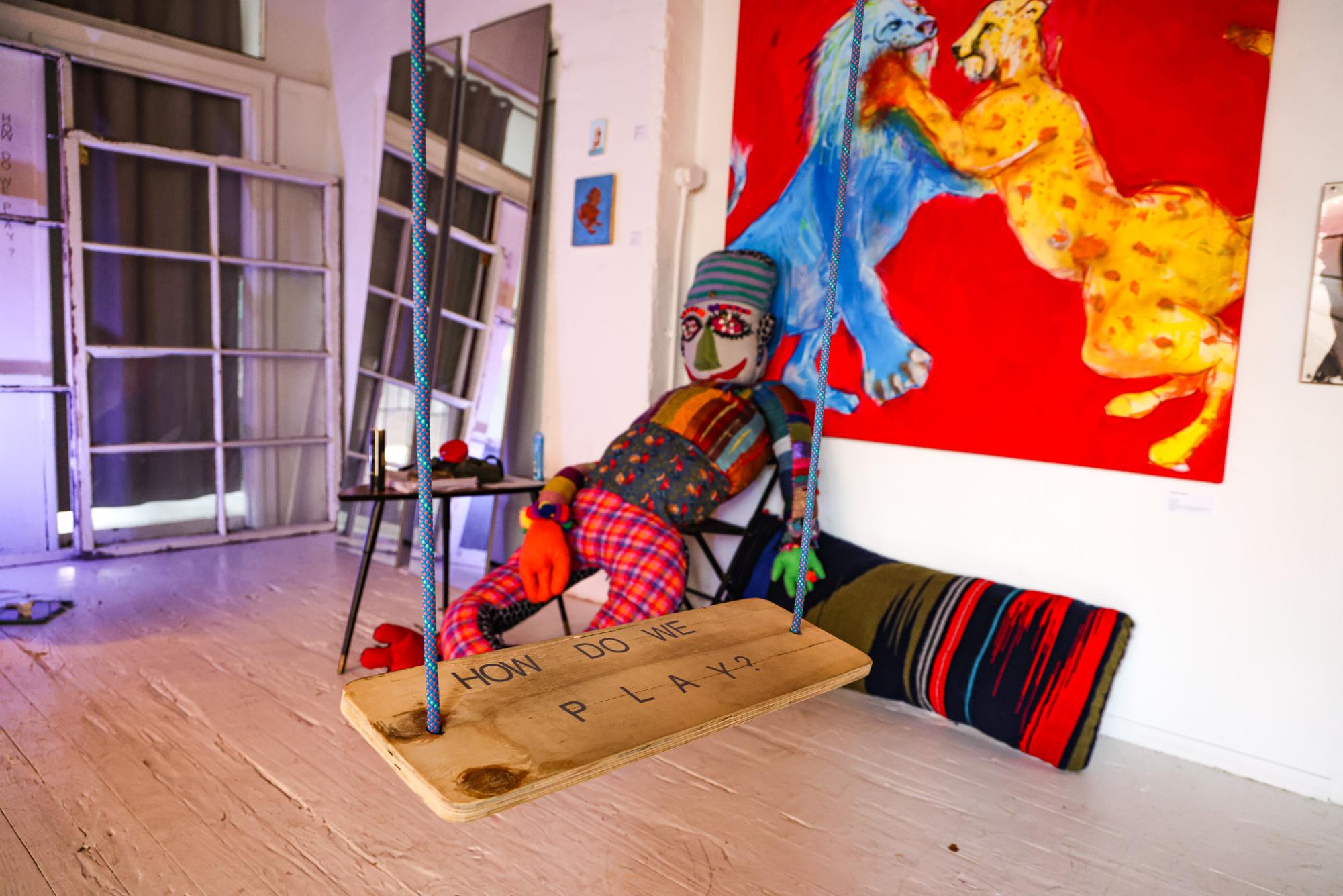
Miskovsky’s contribution to the exhibition was a framed poem, “Walk a Mile in the Shoes of a Yugoslavian Football Player,” which was written based on her recent trip to Serbia. Staying in Belgrade was an opportunity for her to revisit the childhood joy of exploration and experience the youthful fascination that comes with visiting a new place.
“We felt like the whole kind of experience was us using this city as our playground, so I was kind of exploring the passage of time and how time has played such an integral role in Belgrade’s evolution,” Miskovsky said. “In a way, we are reframing the environment where we were to play, explore and find a hidden gem.”
The exhibition, while primarily manifesting in physical mediums, extended beyond the boundaries of the gallery. Guests watched the sunset on the gallery’s rooftop, where dancer Oona Landgrebe and celloist Sadie Shea, a Tisch senior, explored the intersection of music and movement. The performance consisted of a call-and-response between the cello and Landgrebe’s choreography — as the cello picked up in tempo, so did Landgrebe’s fluid movements. Inspired by the liberation that comes with spontaneous play, their performance encouraged guests to move unapologetically.
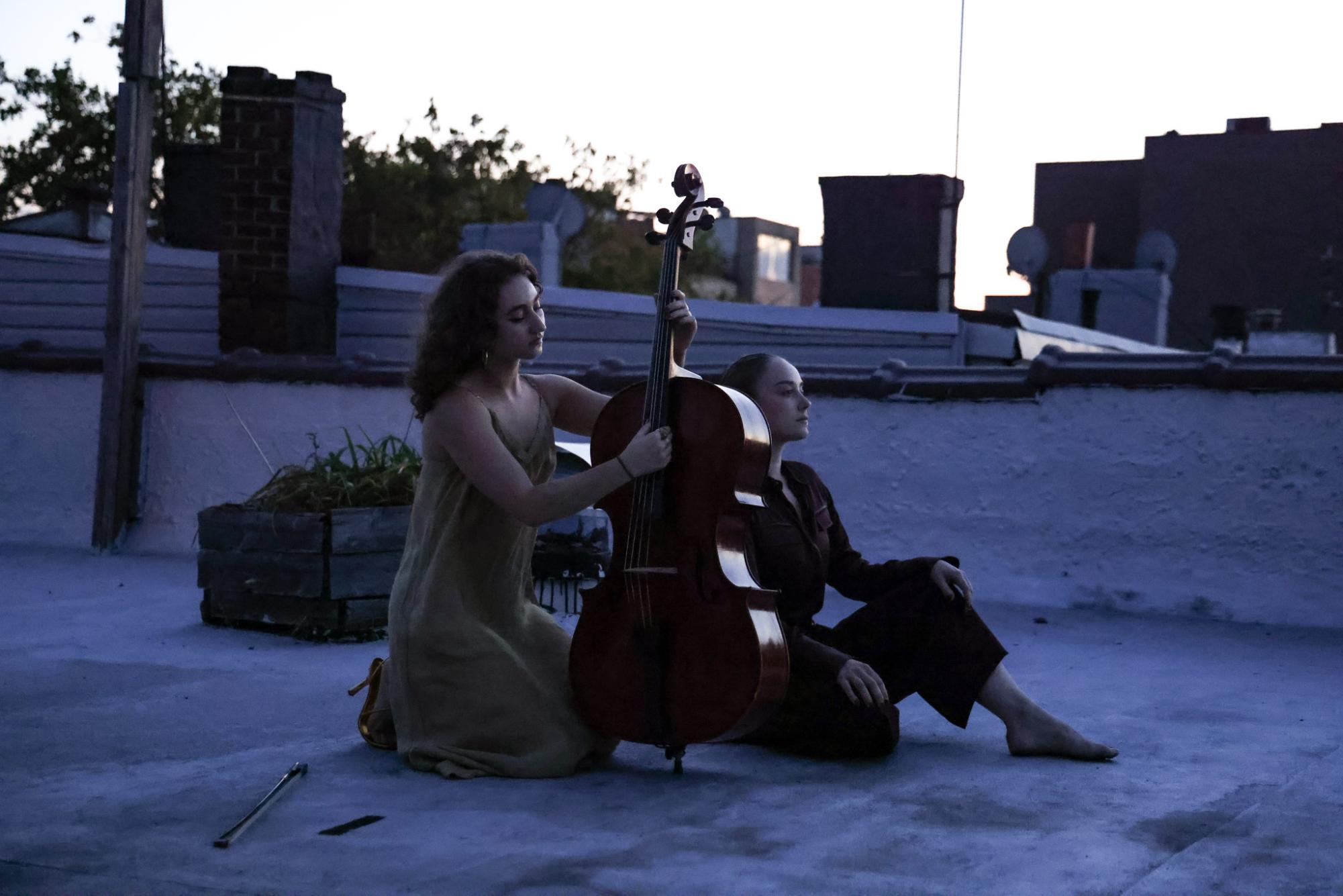
Between playful pieces and an invigorated effort to engage the people observing them, the exhibition is an opportunity for viewers to rediscover childhood wonder — or to redefine the concept of “play” in a manner that perhaps they never have before.
“How Do We Play?” is on display at Fractal Tech Hub in Williamsburg until Sept. 30.
Contact Dani Biondi and Eleanor Jacobs at [email protected].
























































































































































